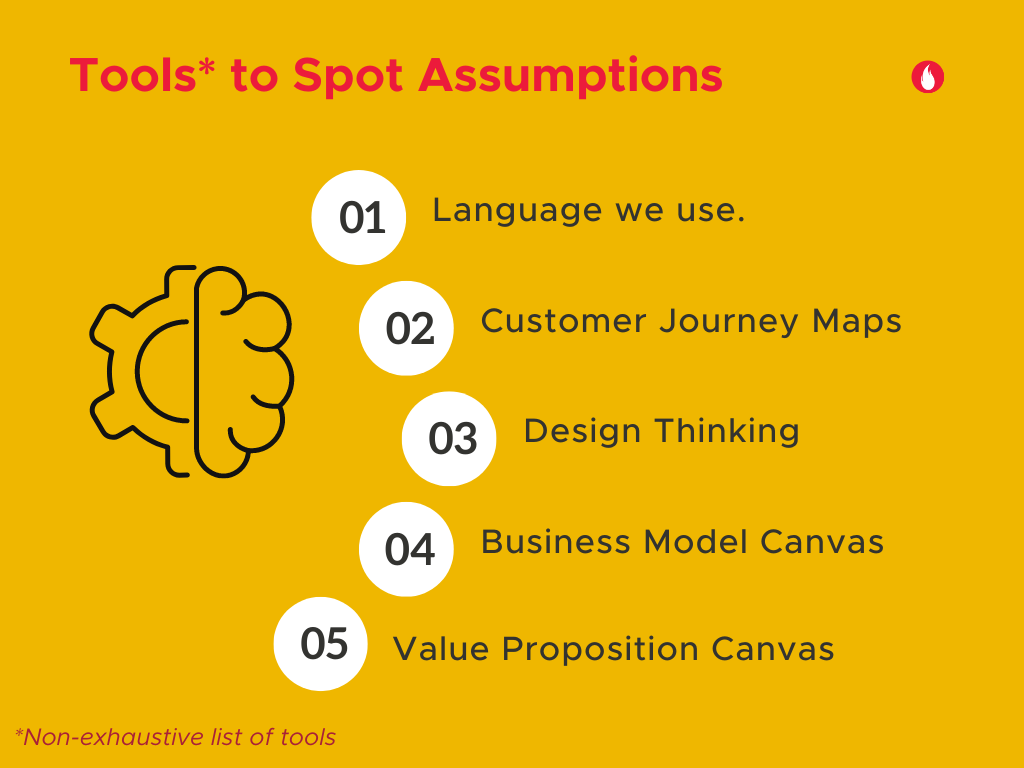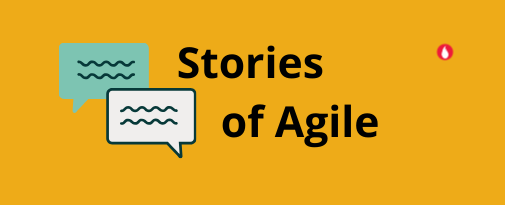
We see the world through the lenses we use to see it from. Our lenses in turn, are shaped by our experiences, our beliefs and the assumptions we make. Thus, to see possibilities around us better, we need to be able to spot our assumptions. In this post we carry 5 tools to spot assumptions. Tools which will help us see assumptions and therefore possibilities better!
Assumptions & Agile
We have been exploring assumptions and its various facets in our earlier post(s). Assumptions are beliefs that we do not have evidence for. But assumptions play an important role in helping us work and take decisions. Agile ways of working help teams reduce the number of assumptions they need to make to take a decision. How do they do it? Teams take on a small area of work and approach it iteratively through experiments and sprints. Each experiment in each sprint increases what they know about the topic. Thereby reducing the assumptions, they have to make to take decisions.
“Your assumptions are your windows on the world. Scrub them off every once in a while, or the light won’t come in.”
― Isaac Asimov
For Agile ways of working to be truly effective, teams must be able to spot and call out the assumptions they are making. Spotting and being aware of our assumptions is not always easy. Even experts are susceptible to these errors of spotting assumptions. Hence equipping ourselves with the skills, tools and mindsets required to spot assumptions is an important area for our own growth and development.
5 Tools To Spot Assumptions
Spotting assumptions helps bring awareness to the choices and decisions leaders and teams must make every day. In this edition we curate 5 tools business leaders can leverage to spot and call out assumptions at work and life. Read on to explore these tools and the links for more details.

1. Language we use
Yes, the language we use can be a good start point to identify assumptions we are making. We had written about it in detail here. You can take a quiz too to test yourself!
2. Customer Journey maps
Taking a step back to look at the customer journey’s is a great way to call out some of the assumptions we are making about the product /process. Detailing out the steps, people involved, handovers etc, bring into focus many assumptions at play. Here is a resource to help you in creating journey maps.
3. Design Thinking
Yes, the concepts of desirability, viability and feasibility are great hunting grounds for assumptions at work. The secret here is to approach it with questions. Here is a resource which explains it in more detail.
4 & 5 Business Model Canvas & the Value proposition canvas
The business model and value proposition canvas are two powerful tools to explore the assumptions we are making. Writing out the pain points or gains from the product/feature/process for instance helps call out assumptions. The BMC on the other hand helps us become aware of the assumptions we are making about the macro environment too! These tools are even more useful together.
Peter Senge says it well, in the book Presence – “We all accept reality as it is presented to us. Our awareness presents itself to us as immediate and unmistakable. Yet there is always much more than we see.” Helping ourselves ‘see’ better makes the world one of possibilities and scenarios to explore. Let’s explore scenario thinking in our next edition.

Agile story
Here is a story of Team New Zealand and the America’s Cup. The world’s premier boating competition which began in 1851! Over the year’s the competition has become a high-profile international sports event that challenges not only teams sailing skills but also their ability to design, engineer and produce the most capable boats.
In 1995, Team New Zealand took on defending champions USA and won. So far Team New Zealand has won the title 4 times and are touted as the greatest modern Americas Cup team.
Team New Zealand credits their success to experimentation. Here is how they approached the race in 1995 and thereafter.
Team New Zealand led by Peter Blake agreed that their single objective was a boat that went faster. The team brain-stormed different design alternatives that could enhance the performance of the boat. Every idea generated to achieve this was treated as a different testable hypothesis.
Each hypothesis was then rigorously tested through a combination of simulated, prototyped, and live tests (Tank and tunnel tests)! This complementary approach of testing meant that Team New Zealand could manage time and budget constraints far better. They ran thought experiments, simulations, prototypes. Eliminating and building on hypothesis at every stage. Finally live testing those hypotheses that made the cut. They further generated data through live testing and implemented about 1/3rd of the ideas and hypothesis. In the process creating a sailing team which continuously learnt and improved and went on to win 4 championships!

Footnotes:
Agile Story:
- McKinsey, Flying across the sea powered by AI.
- John Childress, Will it make the boat go faster?, Association for Talent Development.
- Toby Heppell, How New Zealand became the greatest modern America’s Cup team, Yatching World.
- Marco Iansiti, Case study – Team New Zealand, Harvard Business Review.
Resources to spot assumptions:
- Apollo M Nkwake, What are assumptions? Research on Springer Link.
- Oschadleus, J. (2011). I think…I thought…what was I thinking?: Assumptions that drive decision-making. Paper presented at PMI® Global Congress 2011—North America, Dallas, TX. Newtown Square, PA: Project Management Institute.
- Trafton Drew, Melissa L, Jeremy M Wolfe, The invisible gorilla strikes again: Sustained inattentional blindness in expert observers, Research Journal Sage publications (Vol 24, Issue 9)
- Robert S Kaplan, Have you checked your assumptions lately? Inc.com and Harvard Business School.
- Tool, Identifying assumptions and conclusions test, TopNotcher.
- Tool, Business model canvas, Strategyzer.
- Tool, Value Proposition Canvas , Strategyzer.







